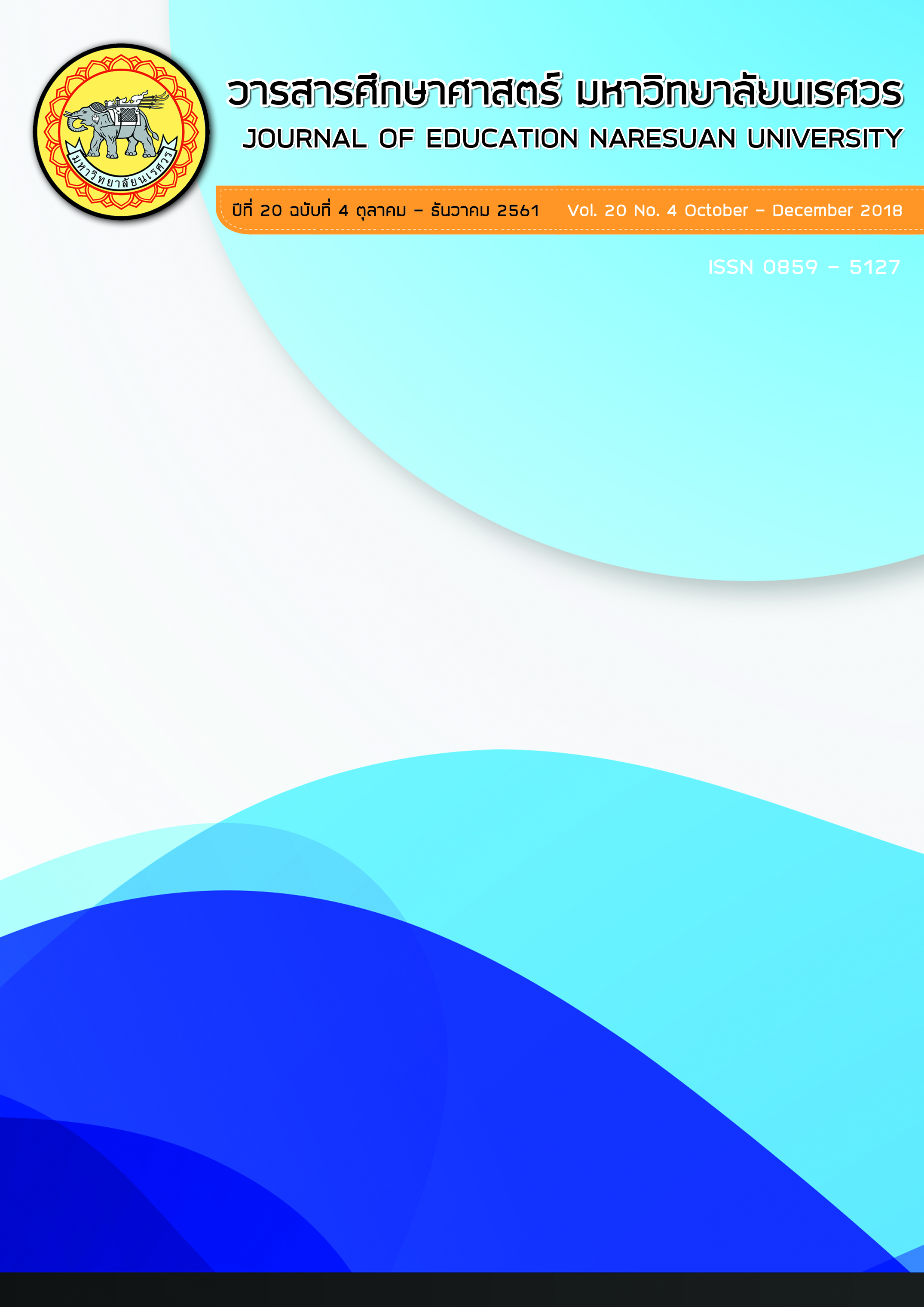การจัดการเรียนรู้คณิตศาสตร์ตามแนวทางสะเต็มศึกษา: วิธีการ ความหวัง และความท้าทาย; MATHEMATICS LEARNING BASED ON STEM EDUCATION: APPROACH, EXPECTATION, AND CHALLENGE
Main Article Content
Abstract
การจัดการเรียนรู้แบบสะเต็มศึกษา เป็นการจัดการเรียนรู้ที่มุ่งให้ผู้เรียนได้เชื่อมโยงความรู้ระหว่างวิชาวิทยาศาสตร์ เทคโนโลยี กระบวนการออกแบบเชิงวิศวกรรมและคณิตศาสตร์ เพื่อนำไปแก้ปัญหาต่างๆ ในชีวิตจริงและช่วยให้ผู้เรียนตระหนักในคุณค่าของการเรียนรู้แต่ละวิชา การจัดการเรียนรู้คณิตศาสตร์ตามแนวทางสะเต็มศึกษา ในประเทศไทยยังขาดความชัดเจนและเอกลักษณ์ตามลักษณะและธรรมชาติของวิชาคณิตศาสตร์ไป ดังนั้น การจัดการเรียนรู้คณิตศาสตร์ตามแนวทางสะเต็มศึกษาที่เน้นวิชาคณิตศาสตร์เป็นแกนของเรื่องจึงนับว่าเป็นภารกิจที่ท้าทาย ในขณะเดียวกันก็เป็นความหวังอีกทางหนึ่งในการมุ่งเน้นให้ผู้เรียนใช้แนวคิดและทักษะกระบวนการทางคณิตศาสตร์เชื่อมโยงกับวิทยาศาสตร์ เทคโนโลยีและการออกแบบทางวิศวกรรมตามที่มาของแนวคิดสะเต็มศึกษา ซึ่งผู้วิจัยนำเสนอไว้ในบทความนี้ รวมถึงตัวอย่างกิจกรรมการเรียนรู้คณิตศาสตร์ตามแนวทางสะเต็มศึกษาระดับประถมศึกษาและมัธยมศึกษา
MATHEMATICS LEARNING BASED ON STEM EDUCATION: APPROACH, EXPECTATION, AND CHALLENGE
STEM education is an interdisciplinary approach to integrate four disciplines of science, technology, engineering design process, and mathematics into learning experience for students to learn and realize the importance of subjects. In Thailand, STEM-based mathematics learning is still ambiguous the properties of mathematics and its nature are needed to be clarified in the learning design. Therefore, STEM-based mathematics learning is a challenge for teachers and should be further developed the approach of integrating mathematical process skills to science, technology and engineering design process. This article proposed the approach of STEM-based mathematics learning design and activities, as well as, examples of STEM-based mathematics learning activities in primary and secondary education.
Article Details
The owner of the article does not copy or violate any of its copyright. If any copyright infringement occurs or prosecution, in any case, the Editorial Board is not involved in all the rights to the owner of the article to be performed.
References
Billiar, K, Hubelbank, J., Oliva, T., & Camesano, T. (2014). Teaching STEM by design. Advance in Engineering Education, 4(1), 1-21.
Bybee, Rodger, W. (2013). The Case for STEM Education: Challenges and Opportunities. Arlington, Virginia: National Science Teachers Association, NSTA Press.
Chanprasert, S. (2015). Designing Learning based on STEM Education and 21st Century Skiils. IPST Magazine, 43(192), 14-20. (in Thai)
Hefty, L. J. (2015). STEM Gives Meaning to Mathematics. Teaching Children Mathematics, 21(7), 422-429
Institute for the Promotion of Teaching Science and Technology. (2016a). The Introduction to STEM Education in Primary and Secondary Education Level. Bangkok: BOWT Printing House. (in Thai)
Institute for the Promotion of Teaching Science and Technology. (2016b). Handbook for STEM Education Activities in Secondary Education Level: Book 1. Bangkok: BOWT Printing House. (in Thai)
Kijkuakul, S. (2015). STEM Education. Journal of Education Naresuan University, 17(3), 201-207. (in Thai)
Maiduang, A. (2014). Mathematics in STEM Education. IPST Magazine, 42(186), 16-20. (in Thai)
Makanong, A. (2014). Mathematics for Secondary School Teachers. Bangkok: Chulalongkorn University Printing. (in Thai)
Moomaw, S. (2015). Teaching STEM in the early years [Tanwannarak, S., Trans]. Bangkok: Nanmeebooks Publications. (in Thai)
National Council of Teachers of Mathematics. (2000). Principles and Standards for school Mathematics. Restom. Virginai: National Council of Teachers of Mathematics.
National Research Council (NRC). (2012). A Framework for K-12 Science Education: Practices, Crosscutting Concepts, and Core Ideas. Retrieved June 2, 2016, from http://www.nap.edu/catalog.php?record_id=13165
Sanders, M. (2009). STEM, STEM Education, STEMmania. The Technology Teacher, 68(4), 20-26.
Thongchai, A. (2013). Technology and Engineering in STEM Education. IPST Magazine, 42(185), 35-37. (in Thai)
Vasquez, J. A., Sneider, C., & Comer, M. (2013). STEM Lesson Essentials: Integrating Science, Technology, Engineering, and Mathematics. Portsmouth, NH: Heinemann.


